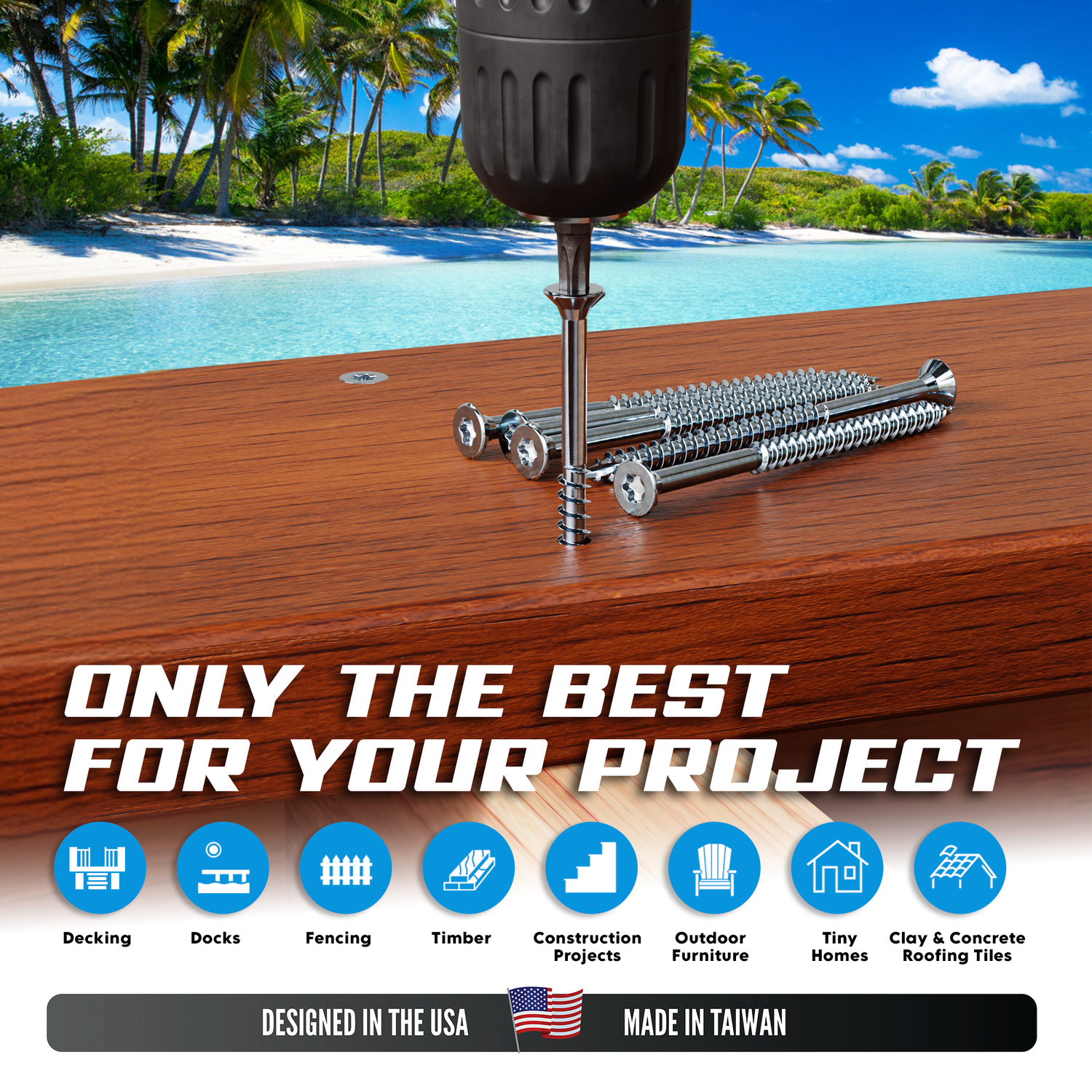
Tiny Home Construction: Budget, Plan, and Maximize Space
Share
With how home values jumped by 45.3% from February 2020 to February 2025, many millennials and Gen-Zers wonder if they'll ever have the means to buy a traditional house.
Today, young adults are finding that buying a piece of land and starting a tiny home construction project could be a smart way to own land before prices go up even more. Plus, living in your tiny home will help you save money and eventually fund your bigger, custom house on the same land.

How Much Should You Budget to Build a Tiny House?
How much you’ll spend on your tiny home depends on several factors, and it’s a long list:
- How big it is going to be.
- The design of your home.
- The type of materials you choose.
- What kind of amenities do you want? (electricity, plumbing, heating, ventilation, air conditioning)
- What appliances you’ll be using.
- The location and local building codes.
- Will you be building everything yourself or hiring professionals?
- Your tiny house's foundation (mobile or stationary).
- What kind of insulation materials and weatherproofing systems you'll install.
- Your interior design choices.
Is It Cheaper to Buy or Build a Tiny House?
Building a tiny house on your own is generally cheaper than buying a prefabricated one, as long as you have the right skills, experience, and time to put into the project. If you build the home on your own, you can cut down on labor costs, which can really add up in the total expenses.
If you don't feel comfortable taking on a DIY tiny home construction, a prefab one can be a viable option. It gives you the peace of mind that your tiny house meets the required safety standards and codes.
If you want to save money and get professional help at the same time, you could build your tiny house yourself and hire subcontractors for certain jobs, like plumbing and electrical work.
You could also think about buying a used tiny house. You can sometimes get a well-kept used tiny house for a lot less money than a brand-new prefab or self-built one.
Planning Your Tiny House
Whether you’re buying or building a tiny house, you need to make sure that the building can handle the stresses that it will face while being moved and used. A tiny house that is built well should be able to stand up to the shaking of a magnitude 5 earthquake and the winds of an F4 storm. This is especially true if it is meant to be mobile.
The standards for wind speed and earthquakes are usually there because many tiny homes are on wheels and have to move at highway speeds (55 to 75 miles per hour) and be able to handle being shaken and banged around by potholes, lane changes, stopping, and other things that happen on the way.
Finding the Right Tiny House Size
The most popular tiny house size usually falls between 100 and 400 square feet, with an average size of about 200 square feet. This size offers a comfortable living area while keeping the advantages of a small and movable home.
Legal Requirements and Towing Considerations
When choosing how big your tiny house should be, it's important to think about the laws in Canada and the United States, or wherever you are. The external dimensions can't be more than 8.5 feet wide and 13.5 feet tall unless you're ready to get a special permit for a "wide load" when transporting your tiny house on public roads.
Also, remember that tiny houses can be pretty heavy, so you'll require a strong truck to tow your home safely.
Before you decide on the size of your tiny house, consider your desired internal layout, both horizontally and vertically. Figure out which features are important for your comfort, like electricity, plumbing, heating, ventilation, and air conditioning. After you have a basic understanding of the layout and features, try to figure out the total weight of your tiny house, along with all your stuff.
It’s important to pick a trailer that can handle the right amount of weight. If you choose a trailer that can hold 7,000 pounds, but your tiny house weighs 10,000 pounds, the suspension might fail, and the axles could break, which could create a risky situation while driving.
Tiny Home Utilities and Amenities
Let the pros handle the utilities; however, if you do have the skills to do it, here are things to consider:
Plumbing
PEX piping is flexible, freeze-resistant, and straightforward to install using quick-connect fittings. To simplify tiny house plumbing, keep pipe runs short and plan ahead. Installing an outside tankless water heater saves space and provides efficient hot water.
Electricity
Using a 50-amp socket to power your tiny house for temporary power is legal and allows you to quickly connect to RV parks. Determine the electrical needs of your tiny house by identifying every appliance and its wattage. Use the formula Watts = Amps × Volts to determine the necessary wire and breaker sizes.
Heating
Consider grid connectivity, lifestyle, BTU sizing, and cost when choosing a tiny house heating system. Propane heaters are clean-burning, efficient, and affordable, making them a favorite choice among tiny house owners. Wood stoves provide warmth and may be used for cooking, but they need periodic maintenance and proper sizing for your space.
Ventilation
Moisture can cause mold, mildew, and structural damage in a tiny house, so ventilation is essential. A mini-split HVAC system with an Energy Recovery Ventilation (ERV) unit captures and distributes moisture from the air to maintain a comfortable humidity level while providing efficient heating and cooling.
Air conditioning
For a tiny house powered by solar, choose a mini-split air conditioning system with a high SEER rating, such as the Fujitsu 9RLS2, which is 27 SEER and much more efficient than window units.
Choosing the Right Materials
On Wheels or on a Foundation
For the foundation of your stationary tiny home, consider using concrete or pressure-treated lumber. Tiny house builders prefer using concrete because it's super strong and lasts a long time. A concrete foundation is an excellent option for securely anchoring your tiny house's components, giving you a sturdy framework to work with.
When building a tiny home foundation with pressure-treated lumber, use corrosion-resistant fasteners like stainless steel screws. Pressure-treated lumber protects against moisture, rot, and bugs but also accelerates steel fastener corrosion.
Because Grade 304/305 or 316 stainless steel screws can withstand pressure-treated lumber deterioration, they will help your tiny home's foundation last for years.
Flooring
When choosing flooring for your tiny house, consider choosing luxury vinyl planks (LVP) because they resist water, are simple to clean, and can hide damage from scratches, cracks, or bends pretty well.
Walls
When building the walls of your tiny house, consider trying advanced framing techniques. This means putting the studs 24 inches apart and using 2x6 studs instead of the usual 2x4s. This approach makes better use of materials, cuts down on weight, and still offers a solid structure, which is perfect for small homes that need to balance being sturdy and easy to move.
To make sure your tiny house walls are held together really well, use top-notch 304 or 316 stainless steel screws. These screws won't rust and can handle the pressures of a mobile home, giving you solid and lasting support for your walls.
Roofs
If you're working on your tiny house roof, consider an unvented roof system. It's simpler to put together, less of a hassle, and helps you make the most of your cozy living space compared to a vented roof. Make sure your roof does a great job managing rain, air, vapor, and heat by installing the layers in the right order. Don’t forget to seal everything up to keep air and moisture from sneaking in.
If you want to make sure your tiny house roof is securely fastened, go for some high-quality stainless steel screws. These corrosion-resistant screws are designed to give you a strong, durable hold, so your roof stays stable and weatherproof.
Location, Location, Location!
 Just like with traditional homes, where you decide to build your tiny home is vital. So, before you start your tiny house construction, the very first thing you need to do is find a legal spot to put it. Don't be the guy who builds a tiny house on wheels only to realize they can't find a place to park it.
Just like with traditional homes, where you decide to build your tiny home is vital. So, before you start your tiny house construction, the very first thing you need to do is find a legal spot to put it. Don't be the guy who builds a tiny house on wheels only to realize they can't find a place to park it.
Make sure to research the local zoning laws and regulations where you want to set up shop. Get in touch with local authorities like zoning departments or planning commissions. They can help you find out where tiny houses are welcome.
You also might want to join local tiny house communities or hop onto online forums. It’s a great way to connect with seasoned tiny house owners who can share helpful tips and advice on where to find the ideal spot for your tiny home.
Tiny Home Construction: Smart Money Move, Smarter Lifestyle Move
Building a tiny home isn't just a smart move for your future housing plans. This is a chance to make your life easier and lessen your impact as a consumer. Instead of adding complicated features to make a smaller space feel like a bigger one, concentrate on simplifying your needs and focusing on what really matters to you.
When you're picking out the best materials for your tiny home, consider teaming up with Eagle Claw Co. We focus on offering top-notch stainless steel screws for building projects. Using strong, rust-proof fasteners helps make sure your small home lasts a long time and stays safe and sturdy.
Eagle Claw Co. knows how crucial it is to use trustworthy materials that won't rust or let you down, making us a great choice for your tiny house project.


